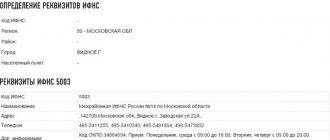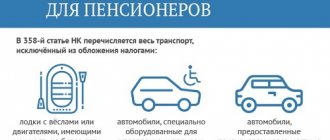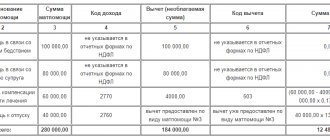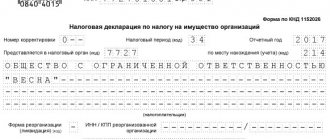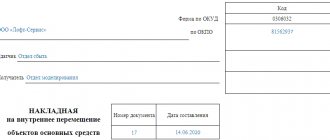Region codes of the Russian Federation are digital designations (two or three digits) that allow you to identify a region of the Russian Federation. These codes are used when registering vehicles with the State Traffic Safety Inspectorate, as well as when assigning a Taxpayer Identification Number (TIN) to the Federal Tax Service. The Federal Tax Service code always corresponds to the traffic police code. If a region runs out of two-digit numbers, then the next series is allocated with a nine at the beginning, if it is not occupied, then another series (three-digit) is allocated, in which the code consists of the serial digit of a hundred plus the region code itself (for example, Moscow codes 77, 97 , 177). Below is a list of area codes:
01 Republic of Adygea 02 Republic of Bashkortostan (also 102) 03 Republic of Buryatia 04 Republic of Altai 05 Republic of Dagestan 06 Republic of Ingushetia 07 Kabardino-Balkarian Republic 08 Republic of Kalmykia 09 Karachay-Cherkess Republic 10 Republic of Karelia 11 Republic of Komi 12 Republic of Mari El 13 Republic of Mordovia 14 Republic Sakha (Yakutia) 15 Republic of North Ossetia 16 Republic of Tatarstan (also 116) 17 Republic of Tyva (Tuva) 18 Udmurt Republic (also 118) 19 Republic of Khakassia 20 Chechen Republic (old numbers) 21 Chuvash Republic (also 121) 22 Altai Territory 23 Krasnodar region (also 93) 24 Krasnoyarsk region 25 Primorsky region (also 125) 26 Stavropol region 27 Khabarovsk region 28 Amur region 29 Arkhangelsk region 30 Astrakhan region 31 Belgorod region 32 Bryansk region 33 Vladimir region 34 Volgograd region 35 Vologda region 36 Voronezh region 37 Ivanov Skye region 38 Irkutsk region (also 138) 39 Kaliningrad region 40 Kaluga region 41 Kamchatka region 42 Kemerovo region 43 Kirov region 44 Kostroma region 45 Kurgan region 46 Kursk region 47 Leningrad region 48 Lipetsk region 49 Magadan region 50 Moscow region (also 90, 150) 51 Murmansk region 52 Nizhny Novgorod region (also 152) 53 Novgorod region 54 Novosibirsk region (also 154) 55 Omsk region 56 Orenburg region 57 Oryol region 58 Penza region 59 Perm region (also 159) 60 Pskov region 61 Rostov region (also 161) 62 Ryazan region 63 Samara region (also 163) 64 Saratov region (also 164) 65 Sakhalin region 66 Sverdlovsk region (also 96) 67 Smolensk region 68 Tambov region 69 Tver region 70 Tomsk region 71 Tula region 72 Tyumen region 73 Ulyanovsk region (also 173 ) 74 Chelyabinsk region (also 174) 75 Chita region 76 Yaroslavl region 77 Moscow (also 97, 99, 177, 197, 199) 78
Automobile codes of regions of Russia. Region numbers.
St. Petersburg (also 98) 79 Jewish Autonomous Region 80 Aginsky Buryat Autonomous Okrug 81 Komi-Permyak Autonomous Okrug 82 Republic of Crimea 83 Nenets Autonomous Okrug 84 Taimyr Autonomous Okrug 85 Ust-Ordynsky Buryat Autonomous Okrug 86 Khanty-Mansiysk Autonomous Okrug 87 Chukotka Autonomous Okrug 88 Evenki Autonomous Okrug 89 Yamalo-Nenets Autonomous Okrug 90 Moscow Region (also 50, 150) 92 Sevastopol 93 Krasnodar Territory (also 23) 94 Territories that are located outside the Russian Federation and are served by the Department of Security Facilities of the Ministry of Internal Affairs (for example, Baikonur) 95 Chechen Republic (new numbers) 96 Sverdlovsk region (also 66) 97 Moscow (also 77, 99, 177, 197, 199) 98 St. Petersburg (also 78) 99 Moscow (also 77, 97, 177, 197 , 199) 102 Republic of Bashkortostan (also 02) 116 Republic of Tatarstan (also 16) 118 Udmurt Republic (also 18) 121 Chuvash Republic (also 21) 125 Primorsky Territory (also 25) 138 Irkutsk Region (also 38) 150 Moscow Region (also 50, 90) 152 Nizhny Novgorod region (also 52) 154 Novosibirsk region (also 54) 159 Perm region (also 59) 161 Rostov region (also 61) 163 Samara region (also 63) 164 Saratov region (also 64) 173 Ulyanovsk region ( also 73) 174 Chelyabinsk region (also 74) 177 Moscow (also 77, 97, 99, 197, 199) 197 Moscow (also 77, 97, 99, 177, 199) 199 Moscow (also 77, 97, 99, 177, 197)
Tax registration of foreign companies and assignment of TIN/KPP is carried out in the following cases:
- if they have branches, representative offices, and other separate divisions on the territory of Russia;
- if they have real estate and/or vehicles on the territory of the Russian Federation.
Tax registration of foreign companies and assignment of a KIO (foreign organization code) is carried out in the case of opening bank accounts in Russia.
1.
KIO: what is this in the details of an offshore company?
This is the number that must be obtained for non-resident companies - offshore companies. Firms registered in the Seychelles, British Virgin, Cayman or Marshall Islands, as well as low-tax zones such as Kira, Hong Kong or the UK in accordance with Article 83 of the Tax Code of the Russian Federation must register if:
- participate in commercial relations on the territory of the Russian Federation through a regular representative office;
- participate in economic relations in Russia for at least one month a year (the total period, the sequence of days does not matter);
- acquired real or movable property;
- in case of opening an account in a local bank.
What documents will be needed when registering an offshore organization?
1 – Statement.
2 – An extract from the register of the company registrar or another document confirming the fact of the establishment of the company.
3 – Certificate from the fiscal authority of the country in which the organization is registered. If there is no taxation in the specified territory, you must provide a Certificate of Tax Exemption.
4 – Constituent documents.
5 – Certificate of appointment of the head of the enterprise and a photocopy of his passport.
6 – If there is a representative, a power of attorney in his name and a copy of an identity document.
The power of attorney must be completed in Russian on behalf of the manager (in simple written form). It is certified by the signature and seal of the company. Despite the fact that the seal is made in the language of the country in which the registration took place, it does not need to be translated. If there is no seal, then the power of attorney is provided in a foreign language. It must be properly apostilled, and the original must be accompanied by a translation into Russian certified by a notary.
All other documents are also submitted in the form of copies. They must be apostilled, executed in Russian and certified by a notary service.
Do not forget to issue a foreign organization code if you have a foreign offshore. If it is absent, the fiscal authorities will have claims against the offshore company, which will entail checking its reliability.
TIN starts with 97 - based on what?
Documents required for registering a branch or representative office and assigning a TIN/KPP:
- Certificate of registration of a foreign legal entity or an extract from the trade (banking) register, or 4 certificates: for the company, for participants (shareholders), for the address, for the directors - (legalized or with an apostille, translated into Russian) - notarized copies;
- Constituent documents (legalized or with an apostille, translated into Russian) - notarized copies;
- A certificate from a tax authority of a foreign state in any form on the registration of a foreign organization as a taxpayer in the country of incorporation indicating the taxpayer code (or its equivalent), issued within the last 3 months (legalized or with an apostille, translated into Russian) - notarized copy;
- The decision of a foreign legal entity to open a Representative Office in Moscow and appoint the Head of the Representative Office (legalized or with an apostille, translated into Russian) - notarized copy;
- Regulations on the Representative Office - notarized copy;
- Power of attorney for the Head of the Representative Office (legalized or with an apostille, translated into Russian) - notarized copy;
- Permission (accreditation) to open a Representative Office - notarized copy;
- Certificate of inclusion in the Consolidated State Register - notarized copy.
2. Documents required for registering companies with real estate or vehicles and assigning TIN/KPP:
- Certificate of registration of a foreign legal entity or an extract from the trade (banking) register, or 4 certificates: for the company, for participants (shareholders), for the address, for the directors - (legalized or with an apostille, translated into Russian) - notarized copies;
- Constituent documents (legalized or with an apostille, translated into Russian) - notarized copies;
- A certificate from a tax authority of a foreign state in any form on the registration of a foreign organization as a taxpayer in the country of incorporation indicating the taxpayer code (or its equivalent), issued within the last 3 months (legalized or with an apostille, translated into Russian) - notarized copy;
- Notarized copies of documents confirming ownership of property or rights of possession and (or) use and (or) disposal.
3. Documents required for registering companies opening bank accounts in Russia and assigning a KIO (foreign organization code):
- Certificate of registration of a foreign legal entity or an extract from the trade register.
- Certificate:
— For participants (shareholders). If the founder of the company is a legal entity, then an extract from the trade register (registration certificate);
- To the address;
- For directors.
- Constituent documents: charter, constituent agreement.
- A certificate from a tax authority of a foreign state in any form regarding the registration of a foreign organization as a taxpayer in the country of incorporation, indicating the taxpayer code (or its equivalent), issued within the last 3 months.
All documents must be translated into Russian and notarized, as well as legalized and have an apostille.
Moscow, Putilkovskoe highway, 12 Phone: +7 (495) 740-6788 +7 (495) 740-6388 Fax: +7 (495) 617-1107
|
Regulation of foreign companies: a look into history
Not only Russian enterprises pay taxes. If a resident of another country carries out certain economic activities in Russia, then in exactly the same manner as is accepted for domestic companies, the foreign representative has certain obligations in the field of payment of mandatory government fees.
Under what conditions may such obligations arise?
1 – In the event that economic relations implemented in the Russian Federation contribute to the emergence of a permanent representative office of a foreign company.
2 – If the activity carried out by a non-resident does not lead to the formation of a regular representative office.
However, the procedure for organizing tax accounting for enterprises with different legal natures became the same not so long ago. What was the difference?
Regular representation is an evaluation category that is formed on the basis of certain formal characteristics. They are detailed in the provisions of Russian tax legislation.
In accordance with regulations, a special definition is introduced to control the activities of the organization and receive from it certain mandatory contributions to the treasury. Thus, if a foreign resident on the territory of our state has a certain separate branch or place through which he carries out transactions of economic significance, he is recognized as a foreign organization with a regular representative office.
The scope of employment of such a company should be related to:
- with the exploitation of natural resources extracted on the territory of Russia;
- with the implementation of construction, installation and commissioning work, as well as maintenance and operation of technical instruments, mechanisms, devices;
- sale of goods using facilities located in the country (warehouses, transport equipment, etc.);
- with the implementation of other work or provision of services aimed at meeting the needs of the population of the country in relation to which the company is a non-resident.
To create a regular representative office, such a company needs to carry out activities within Russian territorial borders for at least 30 days a year and have an office that is the place for the regular implementation of entrepreneurial functions. If a company does not have the characteristics of a regular representative office, but uses accounts in Russian banks, it is considered a foreign resident, but is also subject to taxation.
Foreign companies, international organizations and diplomatic missions must register with the tax authorities. Previously (before October 2003), in order to control the activities and procedure for making regular payments by such enterprises, they, like other Russian companies, were assigned an individual number and reason code for registration (issued to organizations on the grounds provided for by law).
- If the company did not conduct commercial activities in the territory of a foreign state in relation to itself, was not an agent with an official representation, but at the same time was an account holder in local banks, the body authorized to monitor the financial operations of companies issued such an enterprise a reason code for registration accounting and KIO for non-residents (this is the code of a foreign organization, recorded in a special register maintained by each tax office).
Of course, this method of accounting for the activities of enterprises had many disadvantages. Mostly, they were associated with the lack of a coordinated, centralized monitoring system. There was no legal and technical possibility to form a single TIN of a foreign agent on the territory of all constituent entities of the Russian Federation. The result was a conflict situation - if the company had a single head office, but representative offices in different regions, all enterprises scattered across the federal subjects had their own individual taxpayer numbers. In this case, it was impossible to identify them as one company. Formally, each institution was a separate division. This was inconvenient both for the foreign missions themselves and for the tax authorities.
In 2003, the procedure for accounting for the financial activities of foreign enterprises was changed. The legislator decided to combine the individual taxpayer number and the organization code assigned to international and foreign companies. From that moment on, the KIO became part of the TIN of the legal entity - this helped to form a unified code directory. From this moment on, the identification method for all separate divisions of companies, immovable property, as well as movable property, became the same.
The Ministry of the Russian Federation for Taxes and Duties is compiling a general register of codes. Accounting is carried out on the basis of information received from local inspectorates.
Automobile codes of regions of Russia. Region numbers.
Car codes of regions of Russia Numbers of regions of Russia (rus)
| 01 Region code Republic of Adygea | 52 Region code Nizhny Novgorod region |
| 02 Region code Republic of Bashkortostan | 53 Region code Novgorod region |
| 03 Region code Republic of Buryatia | 54 Region code Novosibirsk region |
| 04 Region code Altai Republic | 55 Region code Omsk region |
| 05 Region code Republic of Dagestan | 56 Region code Orenburg region |
| 06 Region code Republic of Ingushetia | 57 Region code Oryol region |
| 07 Region code Kabardino-Balkarian Republic | 58 Region code Penza region |
| 08 Region code Republic of Kalmykia | 59 Region code Perm region |
| 09 Region code Karachay-Cherkess Republic | 60 Region code Pskov region |
| 10 Region code Republic of Karelia | 61 Region code Rostov region |
| 11 Region code Komi Republic | 62 Region code Ryazan region |
| 12 Region code Republic of Mari El | 63 Region code Samara region (also 163) |
| 13 Region code Republic of Mordovia | 64 Region code Saratov region |
| 14 Region code Republic of Sakha (Yakutia) | 65 Region code Sakhalin region |
| 15 Region code Republic of North Ossetia | 66 Region code Sverdlovsk region (also 96) |
| 16 Region code Republic of Tatarstan | 67 Region code Smolensk region |
| 17 Region code Republic of Tyva (Tuva) | 68 Region code Tambov region |
| 18 Region code Udmurt Republic | 69 Region code Tver region |
| 19 Region code Republic of Khakassia | 70 Region code Tomsk region |
| 20 Region code Chechen Republic (old numbers) | 71 Region code Tula region |
| 21 Region code Chuvash Republic | 72 Region code Tyumen region |
| 22 Region code Altai Territory | 73 Region code Ulyanovsk region |
| 23 Region code Krasnodar region (also 93) | 74Region code Chelyabinsk region |
| 24 Region code Krasnoyarsk Territory | 75 Region code Chita region |
| 25 Region code Primorsky Krai | 76 Region code Yaroslavl region |
| 26 Region code Stavropol Territory | 77 Moscow region code (also 97, 99, 177, 197) |
| 27 Region code Khabarovsk Territory | 78Region code of St. Petersburg (also 98) |
| 28 Region code Amur region | 79 Region code Jewish Autonomous Region |
| 29 Region code Arkhangelsk region | 80 Region code Aginsky Buryat Autonomous Okrug |
| 30 Region code Astrakhan region | 81 Region code Komi-Permyak Autonomous Okrug |
| 31 Region code Belgorod region | 82 Region code Koryak Autonomous Okrug |
| 32 Region code Bryansk region | 83 Region code Nenets Autonomous Okrug |
| 33 Region code Vladimir region | 84 Region code Taimyr Autonomous Okrug |
| 34 Region code Volgograd region | 85 Region code Ust-Ordynsky Buryat Autonomous Okrug |
| 35 Region code Vologda region | 86 Region code Khanty-Mansiysk Autonomous Okrug |
| 36 Region code Voronezh region | 87 Region code Chukotka Autonomous Okrug |
| 37 Region code Ivanovo region | 88 Region code Evenki Autonomous Okrug |
| 38 Region code Irkutsk region | 89 Region code Yamalo-Nenets Autonomous Okrug |
| 39 Region code Kaliningrad region | 90 Region code Moscow region (also 50, 150) |
| 40 Region code Kaluga region | 93 Region code Krasnodar region (also 23) |
| 41 Region code Kamchatka region | 94 Region code of territories located outside the Russian Federation and served by the Department of Security Facilities of the Ministry of Internal Affairs |
| 42 Region code Kemerovo region | 95 Region code Chechen Republic (new numbers) |
| 43 Region code Kirov region | 96 Region code Sverdlovsk region (also 66) |
| 44 Region code Kostroma region | 97 Moscow region code (also 77, 99, 177) |
| 45 Region code Kurgan region | 98 City region code |
AUDIT 97, Moscow
St. Petersburg (also 78)
- 1 – this figure acts as an indication that the record number is assigned to the OGRN.
- 08 – entry made in 2008.
- 78 is the number of the subject, that is, St. Petersburg.
- 47 – number of the registration authority. This is interdistrict Federal Tax Service No. 15 for St. Petersburg.
- 03649 – record number.
- 6 – control number.
The last number is determined using a formula. Divide the OGRN without the check digit by 11, that is, 108784703649/11=9889518513.5455. We discard the remainder after the decimal point, and multiply the result by 11, that is, 9889518513*11=108784703643. Then from this number you need to subtract 12 OGRN characters: 108784703649-108784703643=6. This is the control number.
Legal entity in the Russian Federation: how to determine its status - resident or non-resident
Trust the bank? Sorry, but the level of responsibility of the bank is obvious from the fact that it “notified” the person by printing pieces of paper addressed to him and storing them under his printer for 2 years. And as a result, in the accumulated notifications there is NO payment for 2000 rubles received from AAA (USA) LLC, represented by its branch in Moscow. Organization address: Russia, 109028, Moscow, BBB st., no.5. Bank details: CB "Garanti Bank-Moscow" No. 40807810********On clerk.ru they clearly said that this is a NON-resident.
Inn
TIN of a legal entity TIN of a legal entity is a sequence of 10 Arabic digits, of which the first two represent the code of the subject of the Russian Federation in accordance with Article 65 of the Constitution (or “99” for the interregional inspectorate of the Federal Tax Service), the next two are the number of the local tax inspectorate, the next five are the number tax record of the taxpayer in the territorial section of the Unified State Register and the last one is the control digit. The TIN together with the checkpoint make it possible to identify each separate division of a legal entity, therefore both of these codes are often displayed and used together, for example, when indicating the payment details of organizations. TIN of a foreign legal entity Since January 1, 2005, it always begins with the numbers “9909”, the next 5 digits correspond to the Code of the foreign organization, the last one is a check digit.
What is the KIO of an organization in its details?
KIO is what allows the tax authorities to identify a contribution payer who is not a resident in relation to our country. The unique code is recorded in the registration document, which every company is required to obtain when conducting financial transactions in Russia.
With the adoption of a new procedure for monitoring the activities of foreign and international (offshore) companies, the CIO is not issued to enterprises as a separate number. Now it is an integral part of the TIN, although sometimes it is considered as a separate requisite. However, this is more of a nominal approach than a formal one. From a legal point of view, a digital value represents a single number.
KIO occupies positions five through nine in the ten-digit numeric identifier of the company. In this case, the first four values are an index, and the last one is used as the number necessary to control the specified data.
You can obtain a certificate with the code of a foreign organization in the same way as you can find it out if you need to restore a lost certificate - by contacting the tax authority at the place of establishment of the company or the location of the bank in which the company holds an account.
Inn for non-resident legal entities
Info
Home page / Individuals / I am interested in / Taxpayer identification number - a sequence of 12 Arabic digits, of which the first two represent the code of the subject of the Russian Federation according to Art. 65 of the Constitution, the next two are the number of the local tax office, the next six are the number of the taxpayer’s tax record and the last two are the so-called “check digits” to check the correctness of the entry. TIN of an individual entrepreneur Assigned upon registration of an individual as an individual entrepreneur, if this person did not previously have one.
Otherwise, the existing TIN is used.
How to decipher a checkpoint?
Quick establishment of a primary account, automatic filling of TIN and PPC of counterparties, free updates and technical support.
The checkpoint is a sequence of 9 Arabic numerals.
- The first two characters correspond to the code of the subject of the Russian Federation. For interregional inspectorates for the largest taxpayers, the first two digits in the checkpoint are 99.
- The third and fourth characters show the number of the tax office that registered the organization or separate division at the place of its registration, location of real estate or transport, or processed other information related to registration or deregistration.
- Two signs in the fifth and sixth positions of the checkpoint indicate the reason for registration. These can be not only numbers, but also capital letters of the Latin alphabet from A to Z.
Code number 001 means that the Russian organization has registered as a taxpayer with the tax authority at its location.
Codes 006 - 008 mean that the Russian taxpayer organization is registered at the place of registration of its real estate (depending on the type of property).
- The last three characters are the serial number that is given to the company when registering with the tax authority and on the appropriate basis.
Many companies have the same checkpoint. This means that they are registered with the same tax office for the same reasons.
The checkpoint paired with the Taxpayer Identification Number allows you to unambiguously identify not only the organization, but also each of its separate divisions.
Quick establishment of a primary account, automatic filling of TIN and PPC of counterparties, free updates and technical support.
How to get a tax identification number for a foreign citizen
Attention
A foreign organization wishing to be a member of the Russian Society does not need to register in the Russian Federation) Almaz55 Activist Messages: 1,086 1 2 3 « Previous topic | Next topic » Reg Smileys On Code On HTML Code Off Forum rules Quick transitionMy accountPrivate messagesSubscriptionsWho's on the forumSearch the forumForum main pageInformation and analytical department News and articles Press releasesRegistration of legal entities and related industries Registration, changes, reorganization of legal entities General questions MIFTS No. 46 for Moscow Registration during the creation of MIFTS No. 15 for St. Petersburg Changes and Re-registration Mos.
region Reorganization and liquidation Regions Correction of errors of individual entrepreneurs Failures OKVED Forms and sample documents Archive Interaction with the state.
Decoding the TIN of an individual
The TIN of a taxpayer-citizen includes 12 digits. A separate TIN is not entered for entrepreneurial activities, therefore, in the Federal Tax Service accounting system, every person, regardless of whether he is an entrepreneur or not, is registered under one number throughout his life. Although in some cases (for example, when owning real estate in different regions) he will be simultaneously registered with different Federal Tax Service Inspectors, only one Taxpayer Identification Number is still used.
Decoding the TIN by numbers:
- characters 1-4 – number of the Federal Tax Service inspection where the taxpayer is registered for the first time (the first two digits are assigned according to the region code);
- characters 5-10 – serial number when adding a new individual, not previously registered in the register;
- characters 11-12 – control number, assigned according to a special algorithm, used to check the indication of the remaining digits of the TIN.
Individuals, if they are not individual entrepreneurs, when sending various letters and applications to the Federal Tax Service may not include their TIN in the documents, indicating other data sufficient for identification (full name and UIN).
What is ogrn and its decoding
Each subject of the Russian Federation has a specific number.
- Next come four numbers that show which specific Federal Tax Service Inspectorate this company belongs to in a particular region.
- The next five digits are the resolution number under which the company was incorporated. It is interesting that, despite the fact that data is added to the tax register throughout the year, this number is also unique.
- The thirteenth digit is a verification digit; it is the one used to check the OGRN.
It is known that twelve digits are a single number that is divisible by eleven. The remainder obtained by division will be in the place of this thirteenth digit.
It is easy to see that repeating two identical numbers is impossible.
Important
The numbers that indicate the year will be repeated in a hundred years using the same accounting procedure. Also, there cannot be repetitions in the numbers of the region and the Federal Tax Service.
One of these important numbers is OGRN. This number helps to identify legal entities; moreover, each organization individually receives its own OGRN. Using this code, it is easy to see complete information about the company you are interested in, while using the TIN, little information is available about the company, and only about the tax service that assigned this number.
- Purpose ↓
- LLC ↓
- IP ↓
- For non-residents ↓
- Examples ↓
- Differences between OGRN and GRN ↓
- Who issues OGRN ↓
- Cost ↓
- Search and verification of enterprises ↓
- OGRN of the branch ↓
But what is OGRN? OGRN is the main state registration number, which usually consists of thirteen digits, each of which has a specific meaning.
3-digit area codes that begin with the number "2"
We recommend downloading, printing and putting in the glove compartment a table of regional numbers on Russian license plates, which additionally indicates the regional telephone numbers of traffic police duty stations and hotlines - (pdf file).
The program was developed jointly with Sberbank-AST CJSC. Students who successfully complete the program are issued certificates of the established form.
In feature films and television programs, you can see three-digit area codes starting with the number 2 or 3. For example, drivers often wonder what city regions 200, 202, 203, 211, 225, 236, 277 or 303 belong to.
There are two types of TIN in Russia: TIN of an organization - 10-digit and TIN of an individual or individual entrepreneur - 12-digit.
Taxpayer number is an incremental number. If you take a closer look and look at at least a few TINs, you will notice that the later the organization is registered, the larger this number is. Accordingly, knowing the dates of registration of several organizations at intervals of values, one can with some probability assume the time of issuance of the TIN for another organization.
After the specified limit has been exhausted, the Russian region number is changed, which is located on the right side of each registration number. After carrying out such a procedure, numbers within a specific region begin to be issued again.
From January 1, 2021, in accordance with Rosstandart Order N 555-ct, a new national standard of the Russian Federation GOST R 50577-2018 “State registration signs of vehicles” is approved. Types and main sizes. Technical requirements" instead of the old GOST R 50577-93.
There are two types of TIN in Russia: TIN of an organization - 10-digit and TIN of an individual or individual entrepreneur - 12-digit.
What is the tax identification number for non-resident legal entities?
Didn’t ask - no (In your case, but I don’t know the details) Financial monitoring doesn’t fine anyone, but besides it, the currency control authorities are up to their ass. If you violated the rules for conducting currency transactions, you may be fined. Or you may not be fined. The fines are large .You need to live in the UK or somewhere else where there are normal banks and laws. There is nothing more to discuss. Úlfhéðinn 07/15/2010, 21:09 # Great, thanks Myallo 07/12/2010, 19:13 # Re: How to determine non-resident based on details The easiest way to determine residency is by the account number of the sender of the payment (payer). The first five digits of the account in the payment slip are always different for residents and non-residents.
Despite the fact that at least 2 banks out of the top 10 clearly said “we don’t need absolutely anything for transactions under $5,000.” It turns out that in one bank you would not be in danger, but in another - 5,000 rubles for each account, many of which are much smaller? Well, not from the bank, but based on the information leaked by it? Funny.
Or does the bank still not provide the authorities with any information on transactions that, as it itself sees, are less than $5,000? And all the papers for smaller amounts - just to see for yourself? Let's close the topic. For an amount less than 5,000, you do not have to issue a transaction passport. However, the transaction is considered a currency transaction. The bank may request information on it. It may not. If it does, you must provide it. Bank accounts differ in their ownership (Bank of Russia Regulation No. 579-P dated February 27, 2017) and contain the attribute of a resident or non-resident company.
Using the bank account number (consists of 20 digits), it is possible to determine the residence of a legal entity.
